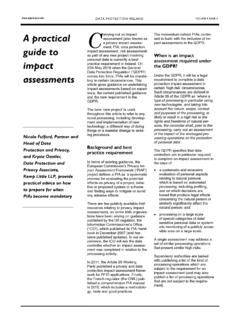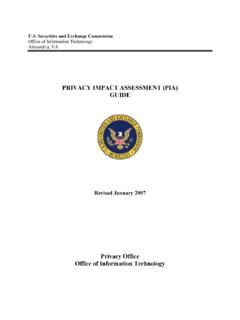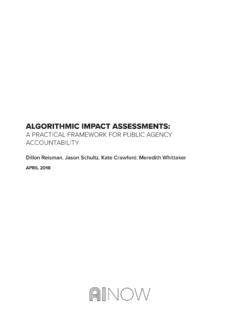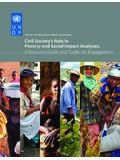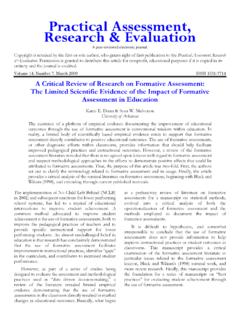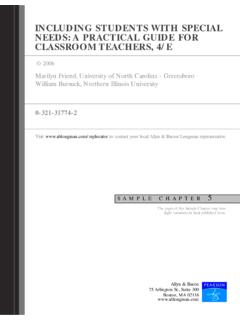Transcription of Under control? A practical guide to applying IFRS 10 ...
1 Under control? A practical guide to applying ifrs 10 consolidated financial Statements February 2017 ContentsIntroduction 41 Overview Summary of ifrs 10 s main requirements Areas where ifrs 10 can affect the scope of consolidation ifrs 10 in the context of the overall consolidation package Effective date and Transition of ifrs 10 112 Scope and consolidation exemptions Scope of ifrs 10 Consolidation exceptions and exemptions 143 The control definition and guidance The practical implications of the control definition The three key elements of control in more detail Purpose and design of investee Situations where the control assessment is unclear Summary of the control assessment process Continuous
2 Assessment 33 Under control? A practical guide to ifrs 10 Under control? A practical guide to ifrs 10 4 applying the control model in specific circumstances Majority holdings in an investee Large minority holdings in an investee Potential voting rights Special purpose and structured entities Principal-agent situations Franchises 585 Consolidation procedures The consolidation process Changes in non-controlling interests Losing control of a subsidiary 736 Investment Entities Definition of an investment entity applying the definition Accounting treatment for an investment entity 86 Appendix Disclosures Under ifrs 12: Understanding the requirements 92 IntroductionAssessing when one entity controls another (in other words, when a parent-subsidiary relationship exists) is essential to the preparation of financial statements in accordance with International financial Reporting Standards ( ifrs ).
3 The control assessment determines which entities are consolidated in a parent s financial statements and therefore affects a group s reported results, cash flows and financial position and the activities that are on and off the group s balance sheet. Under ifrs , this control assessment is accounted for in accordance with ifrs 10 consolidated financial statements . Under control? A practical guide to ifrs 10 ifrs 10 was issued in May 2011, and was part of a package of changes addressing different levels of involvement with other entities. ifrs 10 redefines control and provides extensive guidance on applying the definition. ifrs 10 applies both to traditional entities and to special purpose (or structured) entities and replaced the corresponding requirements of both IAS 27 consolidated and Separate financial Statements (IAS 27) (2008) and SIC-12 Consolidation Special Purpose Entities (SIC-12).
4 It is unusual for ifrs 10 to affect the scope of consolidation in simple situations involving control through ownership of a majority of the voting power in an investee. However, more complex and borderline control assessments need to be reviewed carefully. The member firms within Grant Thornton International Ltd ( GTIL ) have gained extensive insights into the application of ifrs 10. GTIL, through its ifrs team, develops general guidance that supports its member firms commitment to high quality, consistent application of ifrs . We are pleased to share these insights by publishing Under Control? A practical guide to applying ifrs 10 consolidated financial Statements (the guide ).Using the GuideThe guide has been written to assist management in applying ifrs 10. More specifically it aims to assist in: understanding ifrs 10 s requirements identifying situations in which ifrs 10 can impact control assessments identifying and addressing the key practical application issues and judgements.
5 The guide is organised as follows: Section 1 provides an overview of ifrs 10 and areas where ifrs 10 can impact the scope of consolidation. It also explains how ifrs 10 fits into the overall package of Standards on involvement with other entities. Section 2 explains the scope of ifrs 10 from an investor and investee perspective, and the situations in which a parent entity is exempt from presenting consolidated financial statements. Section 3 sets out ifrs 10 s control definition and its key elements, and identifies key practical issues in applying the guidance. Section 4 discusses the specific situations and types of investee for which ifrs 10 can affect control conclusions and the scope of consolidation in practice. Section 5 discusses consolidation procedures and the requirements on changes in ownership and loss of control.
6 Section 6 explains the consolidation exception for investment entities. Appendix A summarises the disclosure requirements in ifrs 12 Disclosure of Interests in Other Entities and provides selected application Thornton International LtdFebruary 2017 When applying ifrs 10, complex and borderline control assessments need to be reviewed carefully. February 2017 5 1 Overview ifrs 10 establishes a single, control-based model for assessing control and determining the scope of consolidation. It applies to all entities, including structured entities , which were previously referred to as special purpose entities Under section summarises ifrs 10 s main requirements, provides insights into areas where ifrs 10 most often impacts consolidation assessments and explains how ifrs 10 fits into the broader consolidation package . Summary of ifrs 10 s main requirementsUnder control?
7 A practical guide to ifrs 10 February 2017 7 Summary of ifrs 10 s main requirementsIFRS 10 establishes principles for the presentation and preparation of consolidated financial statements. To meet this objective it: requires an entity that controls another (a parent) to present consolidated financial statements (subject to limited exemptions see below) defines control , and confirms control as the basis for consolidation provides guidance on how to apply the definition provides guidance on preparing consolidated financial 10 applies to all entities (including structured entities) except long-term employment benefit plans within the scope of IAS 19 Employee Benefits . A parent that is itself a subsidiary of another entity (an intermediate parent) need not present consolidated financial statements if it meets strict conditions, including that: none of its owners object its shares/debt instruments are not traded in a public market a higher-level parent produces publicly-available ifrs consolidated financial statements.
8 A parent that is an investment entity must not present consolidated financial statements if it is required to measure all of it subsidiaries at fair value through profit or loss. ifrs 10 applies only to consolidated financial statements. Requirements on preparing separate financial statements are retained in IAS and exemptions An investor controls an investee when it is exposed, or has rights, to variable returns from its involvement with the investee and has the ability to affect those returns through its power over the investee. Control requires: power over the investee exposure, or rights, to variable returns ability to use power to affect definitionSummary of ifrs 10 s main requirementsIFRS 10 includes additional guidance on the elements of the control definition and their interaction, including: purpose and design of the investee the relevant activities of an investee whether the rights of the investor give it the current ability to direct the relevant activities whether the investor is exposed, or has rights, to variable 10 includes guidance on more difficult control assessments including: agency relationships control over structured entities potential voting rights control without a majority of voting 10 retains established principles on consolidation procedures, including elimination of intra-group transactions and the parent s investment.
9 Uniform accounting policies the need for financial statements used in consolidation to have the same reporting date the allocation of comprehensive income and equity to non-controlling interests accounting for changes in ownership interests without loss of control accounting for losing control of a 10 came into effect for accounting periods beginning on or after 1 January 2013. Transition was mainly retrospective but was subject to reliefs for situations in which: the control assessment was the same as Under IAS 27 (2008) a fully retrospective consolidation or de-consolidation would be adoption was permitted as long as the other standards in the consolidation package were adopted at the same 10 does not include any disclosure requirements but an entity that applies ifrs 10 is also required to apply ifrs 12 which sets out comprehensive disclosure the control definitionPreparing consolidated financial statementsEffective date and transitionDisclosuresUnder control?
10 A practical guide to ifrs 108 February 2017 Terminology special purpose entities (SPEs) and structured entities The guide makes extensive references to special purpose entities (SPEs). These references are used to broadly describe entities which used to be considered within the scope of SIC-12. SIC-12 described SPEs only in general terms, so deciding whether a particular entity is an SPE required judgement. ifrs 10 does not refer to SPEs, but instead refers to entities that have been designed so that voting or similar rights are not the dominant factor in assessing control. These are described as structured entities in ifrs 12. ifrs 10 includes application guidance for assessing control over such entities. In practice we believe that most (but not all) entities previously regarded as SPEs Under SIC-12 are structured entities Under ifrs 10. This is explained in more detail in section Areas where ifrs 10 can impact the scope of consolidation It is unusual for ifrs 10 to affect the scope of consolidation in straightforward situations involving control through majority ownership of voting power.



